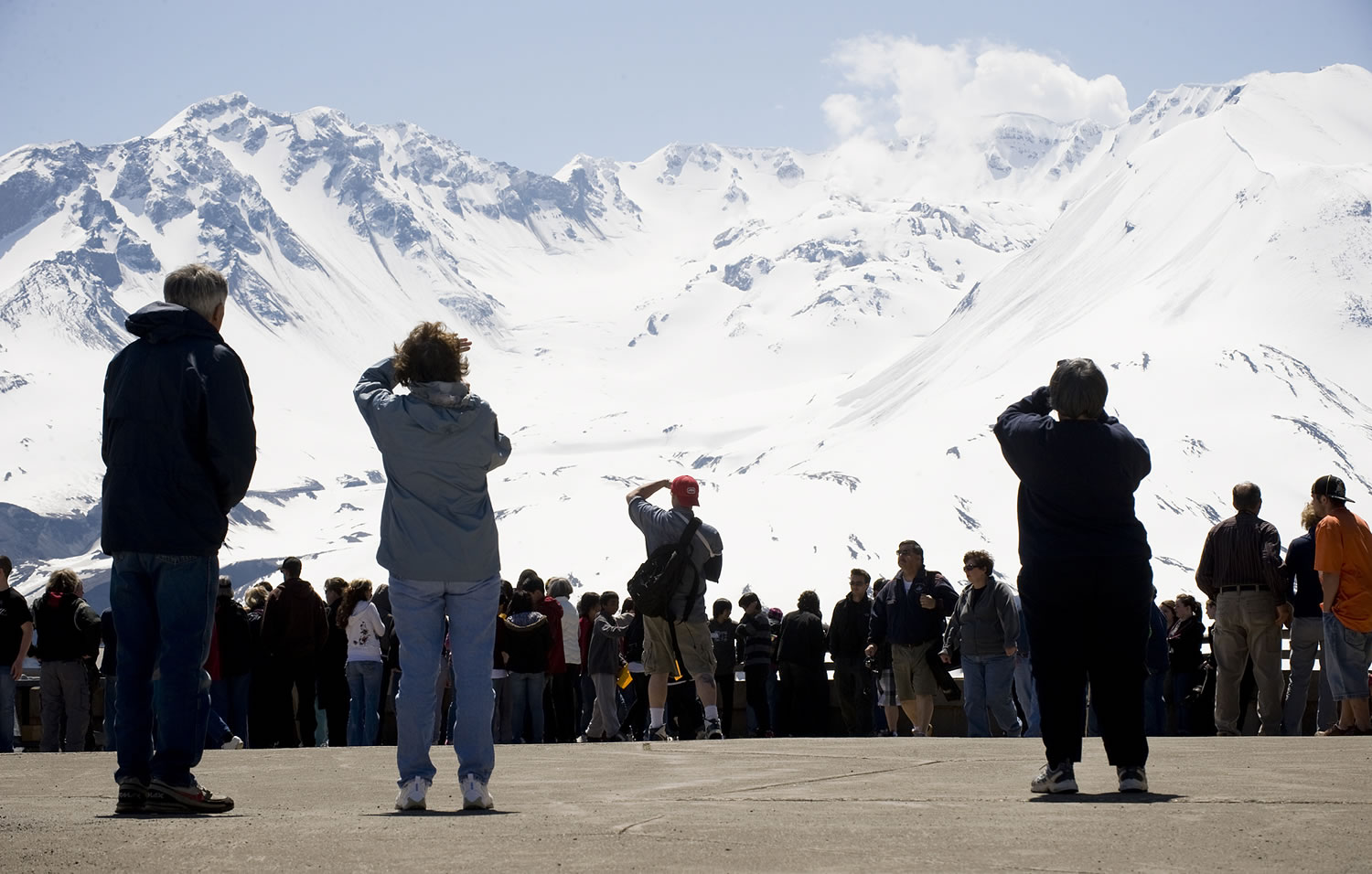Find more information, memories and history on the volcano at www.columbian.com/news/mount-st-helens
When visitors flock to Mount St. Helens on Saturday, it’s a good bet that plenty of them won’t be speaking English as their first language.
Thirty-three years after the eruption that still defines the mountain and the terrain surrounding it, Mount St. Helens is much more than a regional draw. In 2011 alone, people came from at least 20 different countries to see the volcano up close, according to a demographic study released last year. Foreign visitors accounted for nearly 12 percent of people surveyed at the Mount St. Helens National Volcanic Monument, according to the study.
U.S. Forest Service officials who manage the monument have adapted — audio recordings that supplement the exhibits at Johnston Ridge Observatory are available in seven different languages.
“No matter where people are from, we try to meet their needs,” said monument scientist Peter Frenzen.
It was May 18, 1980, that a massive eruption decapitated Mount St. Helens, forever altering one of the Northwest’s landmarks. The catastrophic event killed 57 people, flattened miles of forests and darkened skies as ash billowed from the volcano’s crater. For Northwest residents, the eruption remains a “where were you when …” moment.
Congress established the 110,000-acre national volcanic monument in 1982. Visitor centers at Coldwater Ridge and Johnston Ridge opened in the 1990s. (Coldwater later closed and has since been re-purposed as the Mount St. Helens Science and Learning Center.)
It’s more than just tourists who cross international borders to see the most active volcano in the Cascades, Frenzen said. Foreign teams often come for research purposes, hoping to learn from Mount St. Helens and the wealth of information it continues to provide. The benefit goes both ways, Frenzen said.
“I think those kind of exchanges between scientists and emergency managers are quite important, and they’re very rewarding,” Frenzen said.
Among foreign visitors, most hailed from Canada or Germany, according to the study. Other nations represented on the list were Austria, The Netherlands, the United Kingdom and China. Plenty of visitors are also foreign-born American citizens, Frenzen said.
The languages offered in exhibit materials at Johnston Ridge include Spanish, French, Mandarin Chinese, Russian, German and Japanese, he said.
The forest service also unveiled a new outreach tool in the form of a website launched this month in partnership with the nonprofit Mount St. Helens Institute. The site compiles a detailed history of the volcano and never-before-published photos from scientists’ own collections, Frenzen said. Part of the goal is to make the materials — including several videos and interactive features — accessible to classrooms anywhere, he said.
“Amazing laboratory”
Though still considered active, Mount St. Helens slumbers in a relative tranquility phase these days. Its last eruptive phase occurred between 2004 and 2008. But the evolving landscape around the 1980 blast zone continues to inform researchers at home and abroad.
“It’s an amazing laboratory for us,” said Tom Pierson, a research hydrologist with the Cascades Volcano Observatory in Vancouver.
Johnston Ridge Observatory is about 50 miles east of Castle Rock at the end of state Highway 504. A kick-off event there ushered in the start of the visitor season last weekend. The science and learning center at Coldwater, also on Highway 504, is mainly used for special events and arranged group visits.
Been there, done that? Even for people who call Southwest Washington home, a return trip still might be worthwhile, Frenzen said.
“If you’ve been to Mount St. Helens years ago, it’s a different Mount St. Helens,” he said. “The amount of returning animal life and plant life, each year it’s more and more.
“I really do see something different every time I go out there.”
Eric Florip: 360-735-4541; http://twitter.com/col_enviro; eric.florip@columbian.com.
Watch Sgt. Fred Neiman with the Clark County Sheriff’s Office and Tom Pierson of the Cascade Volcano Observatory recall their experiences in the days and months after Mount St. Helens erupted on May 18, 1980.




